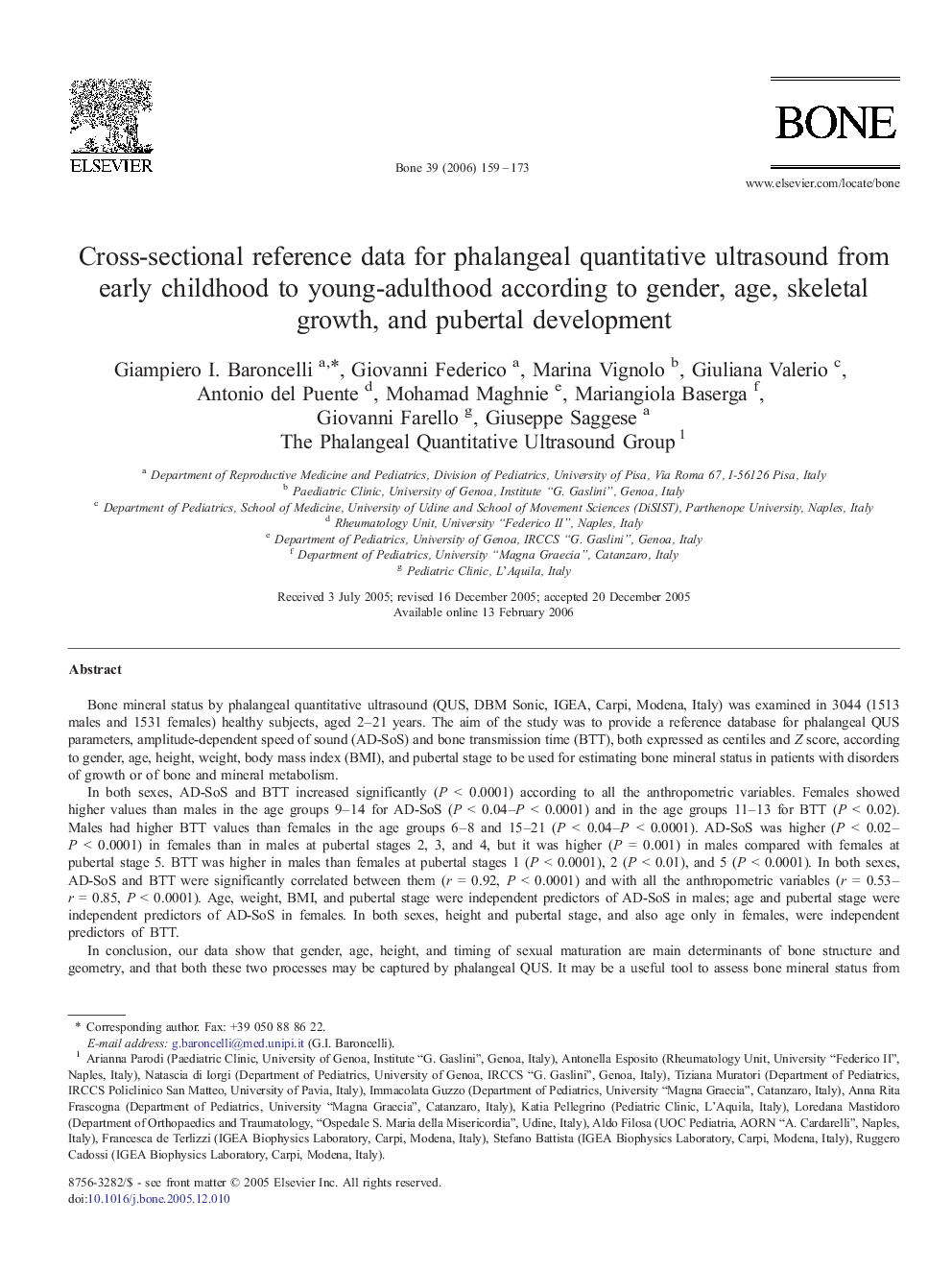| کد مقاله | کد نشریه | سال انتشار | مقاله انگلیسی | نسخه تمام متن |
|---|---|---|---|---|
| 2782585 | 1153353 | 2006 | 15 صفحه PDF | دانلود رایگان |

Bone mineral status by phalangeal quantitative ultrasound (QUS, DBM Sonic, IGEA, Carpi, Modena, Italy) was examined in 3044 (1513 males and 1531 females) healthy subjects, aged 2–21 years. The aim of the study was to provide a reference database for phalangeal QUS parameters, amplitude-dependent speed of sound (AD-SoS) and bone transmission time (BTT), both expressed as centiles and Z score, according to gender, age, height, weight, body mass index (BMI), and pubertal stage to be used for estimating bone mineral status in patients with disorders of growth or of bone and mineral metabolism.In both sexes, AD-SoS and BTT increased significantly (P < 0.0001) according to all the anthropometric variables. Females showed higher values than males in the age groups 9–14 for AD-SoS (P < 0.04–P < 0.0001) and in the age groups 11–13 for BTT (P < 0.02). Males had higher BTT values than females in the age groups 6–8 and 15–21 (P < 0.04–P < 0.0001). AD-SoS was higher (P < 0.02–P < 0.0001) in females than in males at pubertal stages 2, 3, and 4, but it was higher (P = 0.001) in males compared with females at pubertal stage 5. BTT was higher in males than females at pubertal stages 1 (P < 0.0001), 2 (P < 0.01), and 5 (P < 0.0001). In both sexes, AD-SoS and BTT were significantly correlated between them (r = 0.92, P < 0.0001) and with all the anthropometric variables (r = 0.53–r = 0.85, P < 0.0001). Age, weight, BMI, and pubertal stage were independent predictors of AD-SoS in males; age and pubertal stage were independent predictors of AD-SoS in females. In both sexes, height and pubertal stage, and also age only in females, were independent predictors of BTT.In conclusion, our data show that gender, age, height, and timing of sexual maturation are main determinants of bone structure and geometry, and that both these two processes may be captured by phalangeal QUS. It may be a useful tool to assess bone mineral status from early childhood to young-adulthood with a very small confounding effect related to bone sizes and without exposing the subjects to a source of radiation.
Journal: Bone - Volume 39, Issue 1, July 2006, Pages 159–173